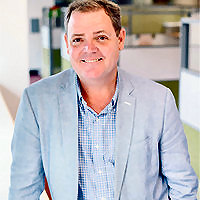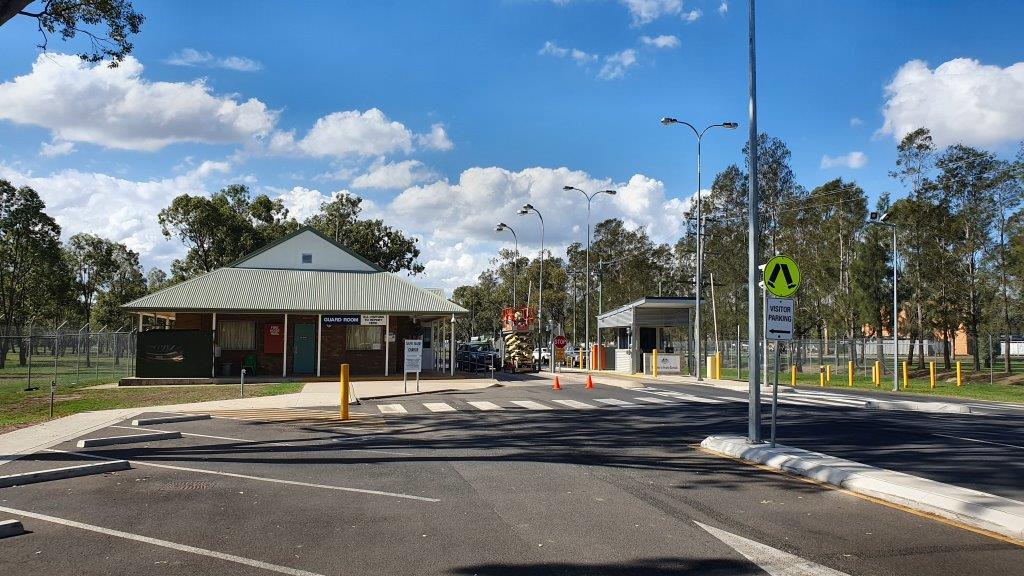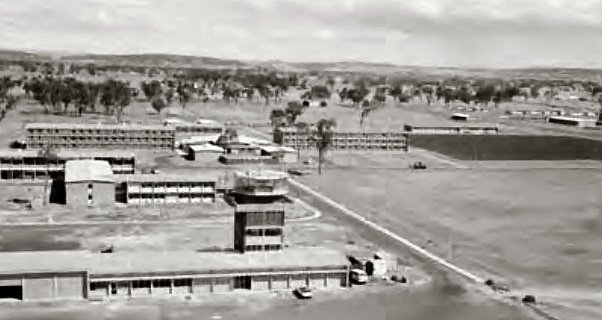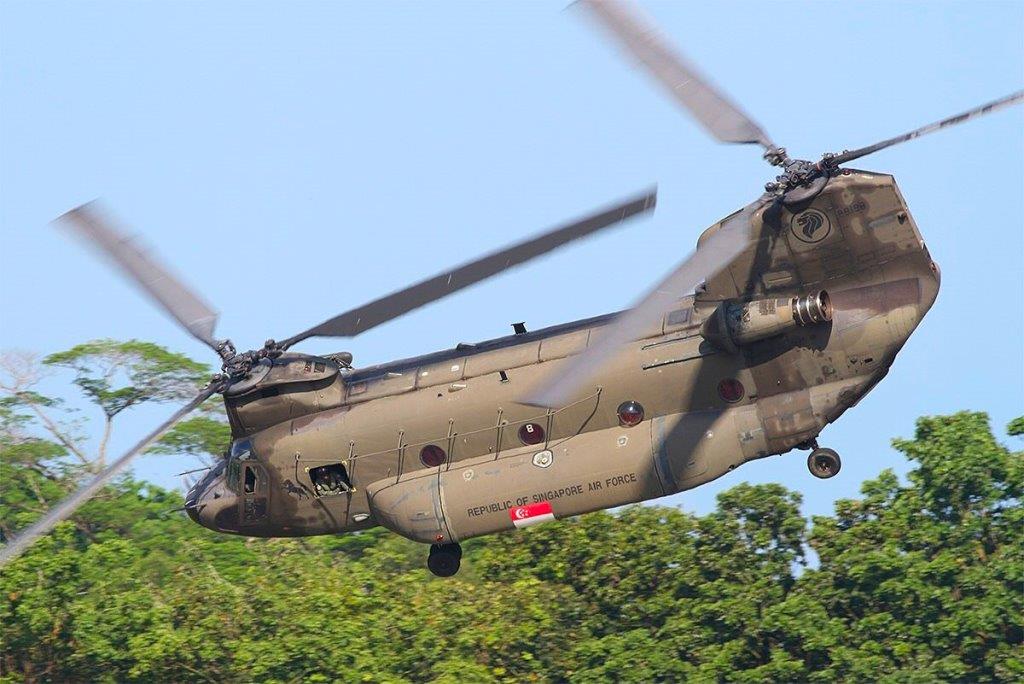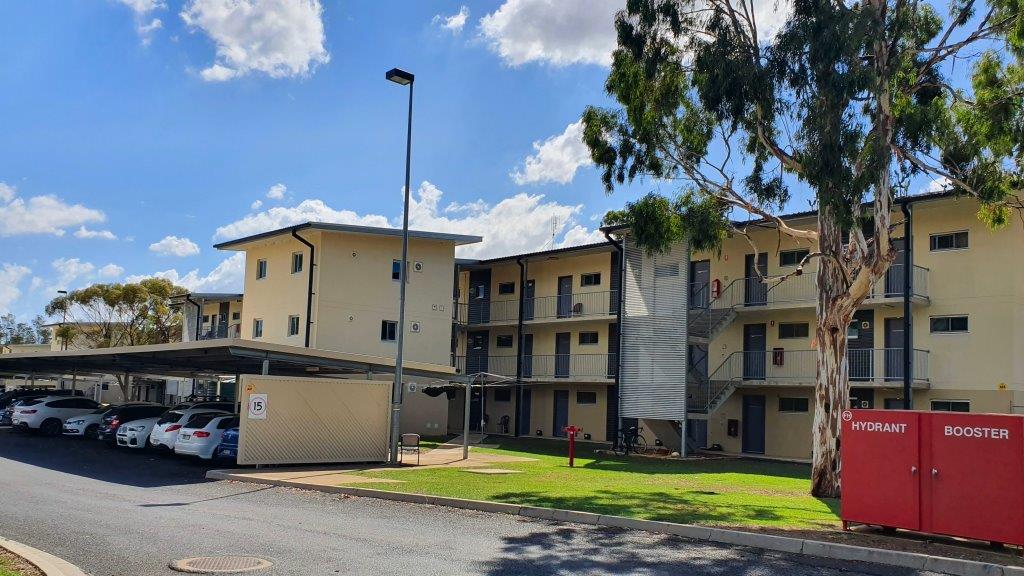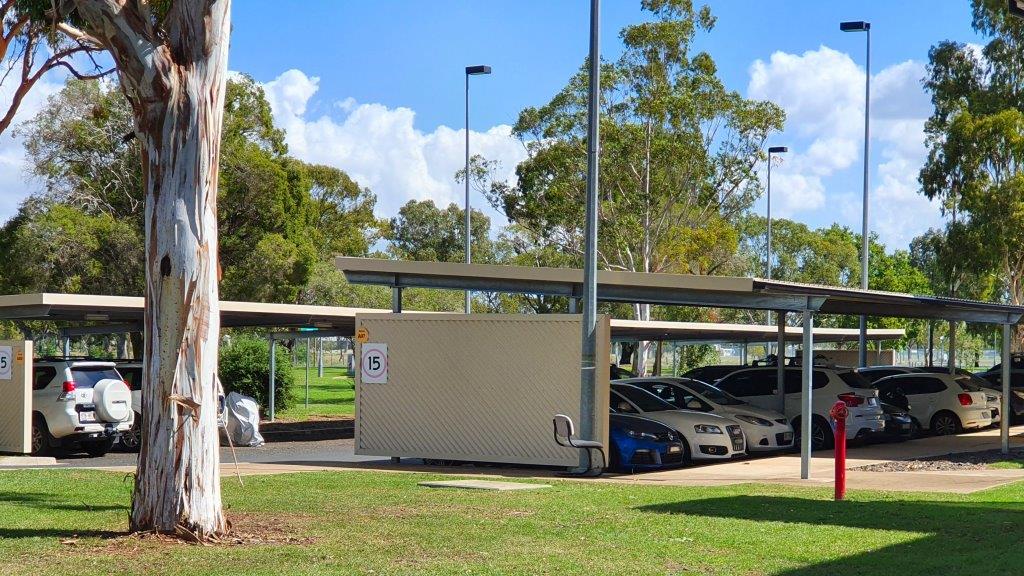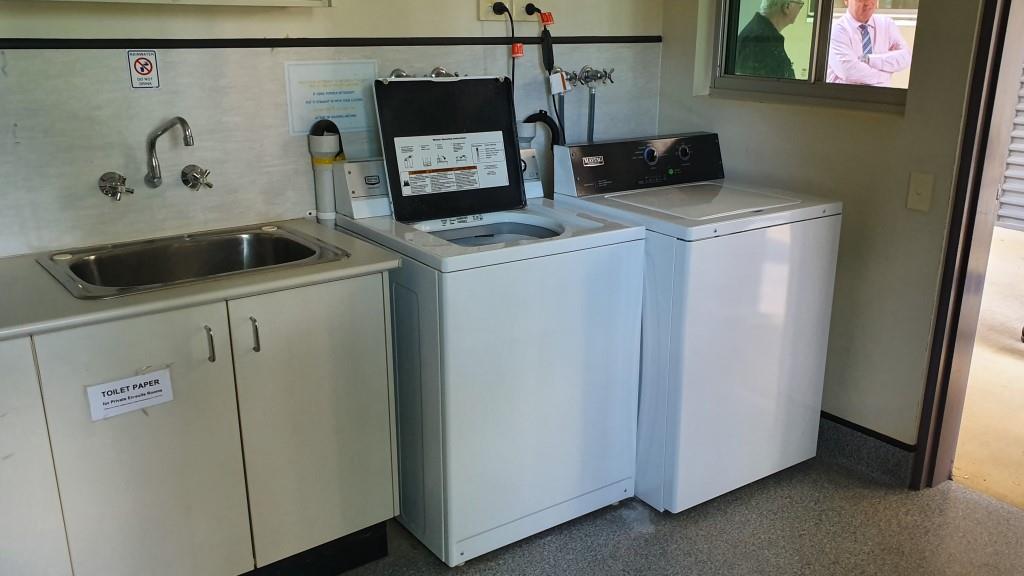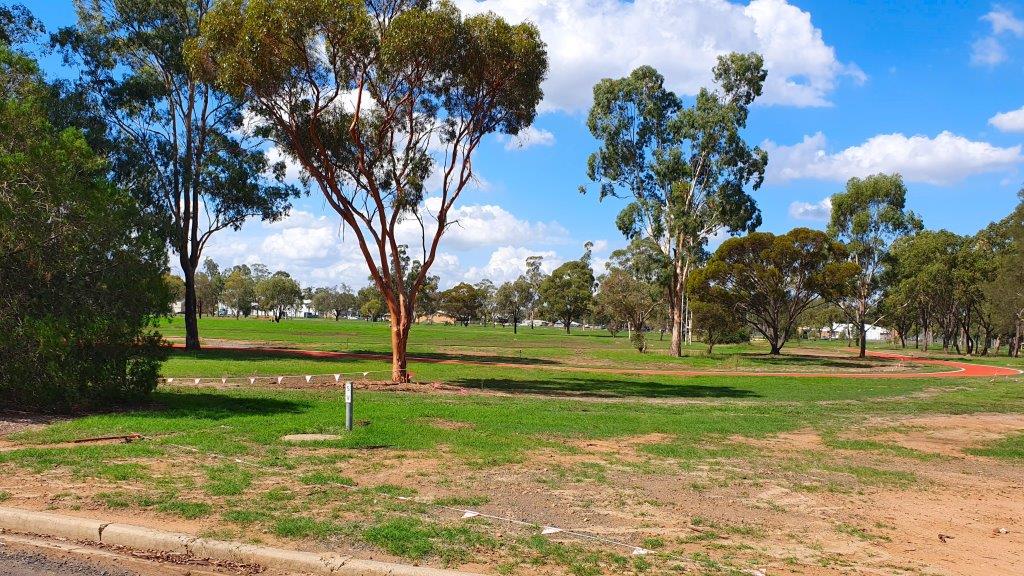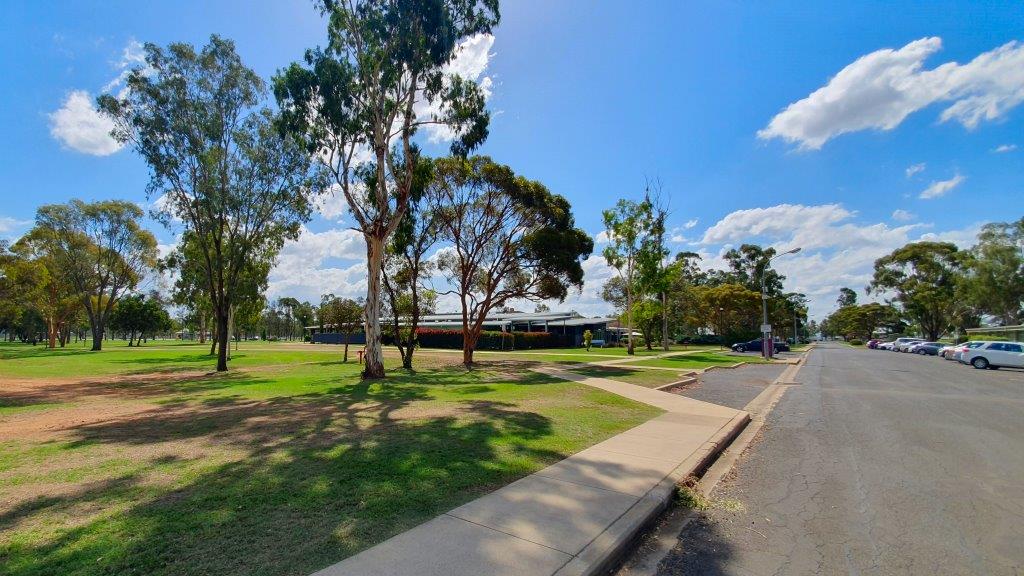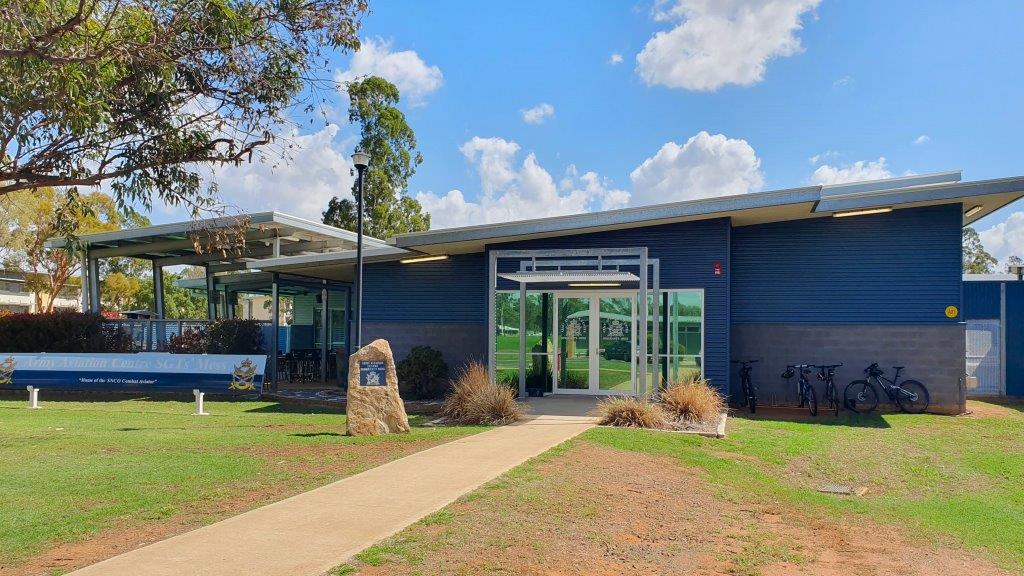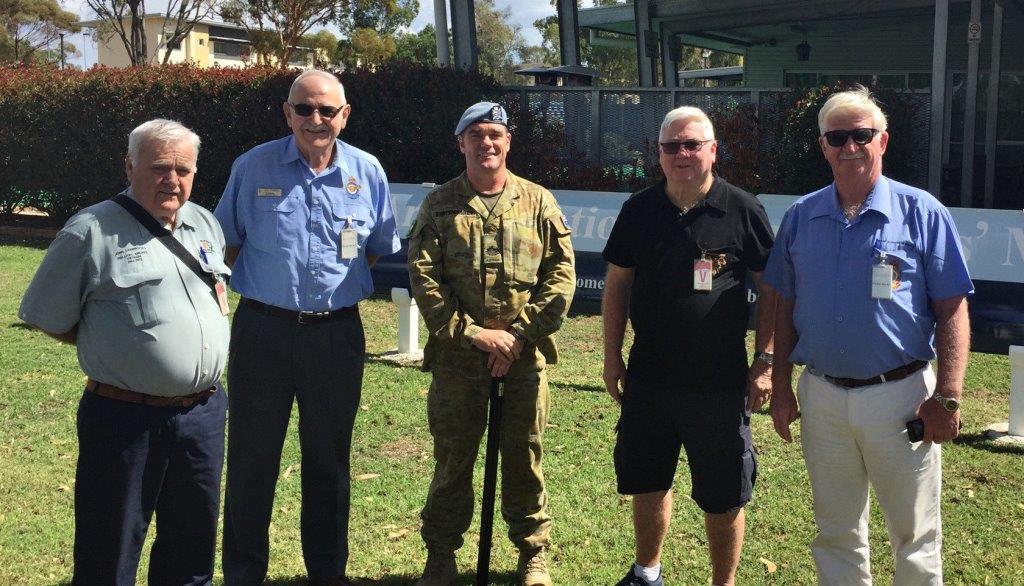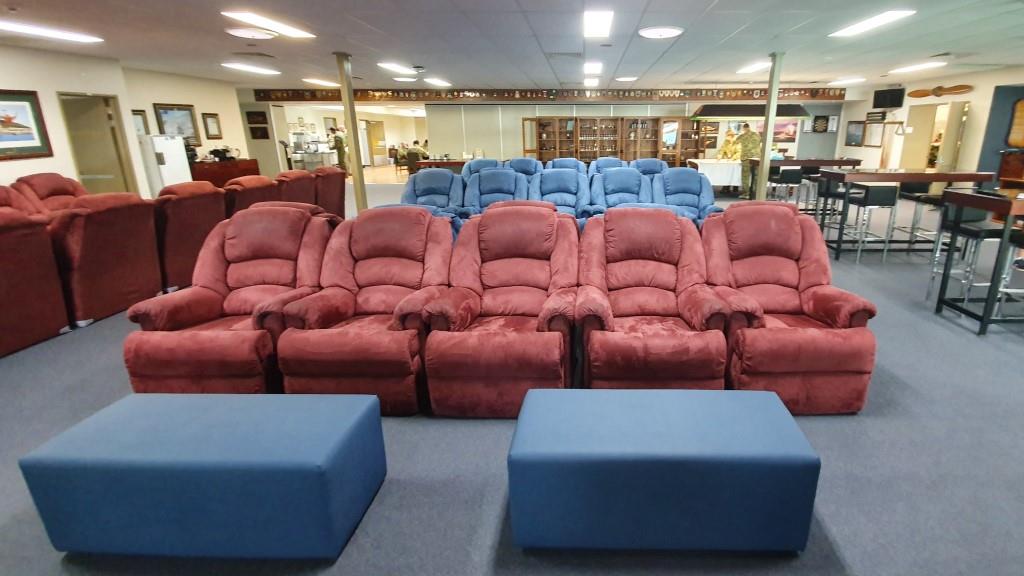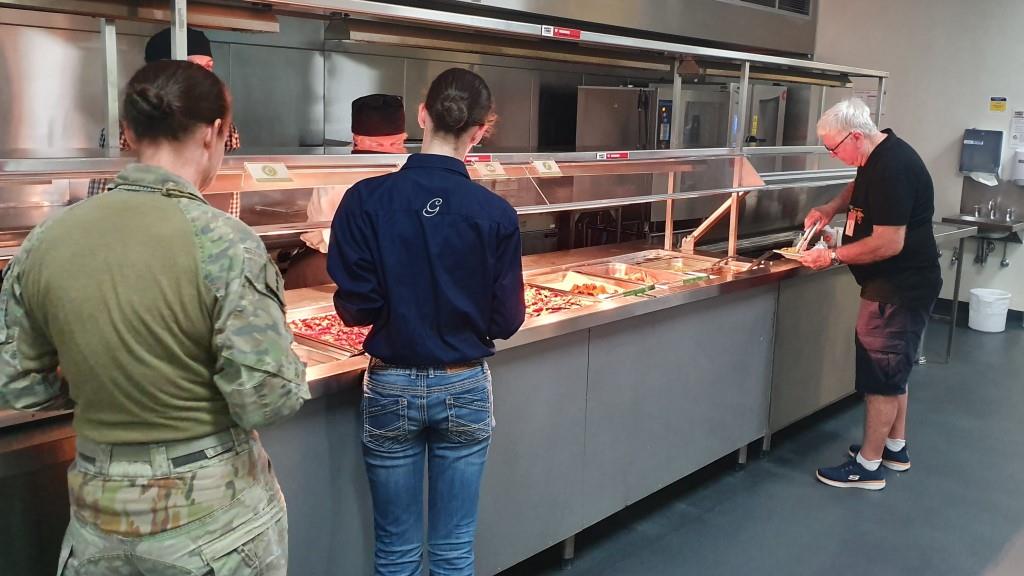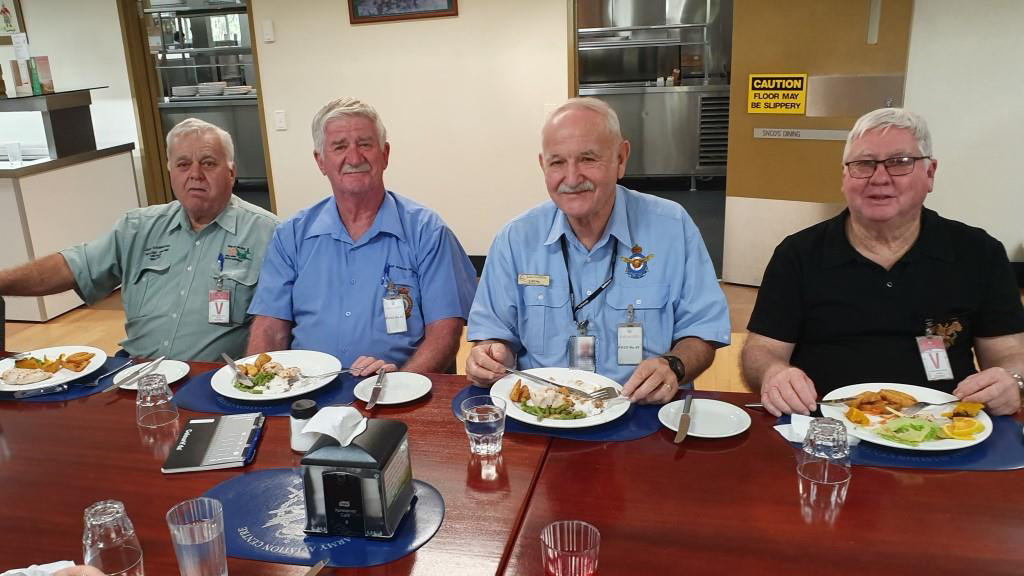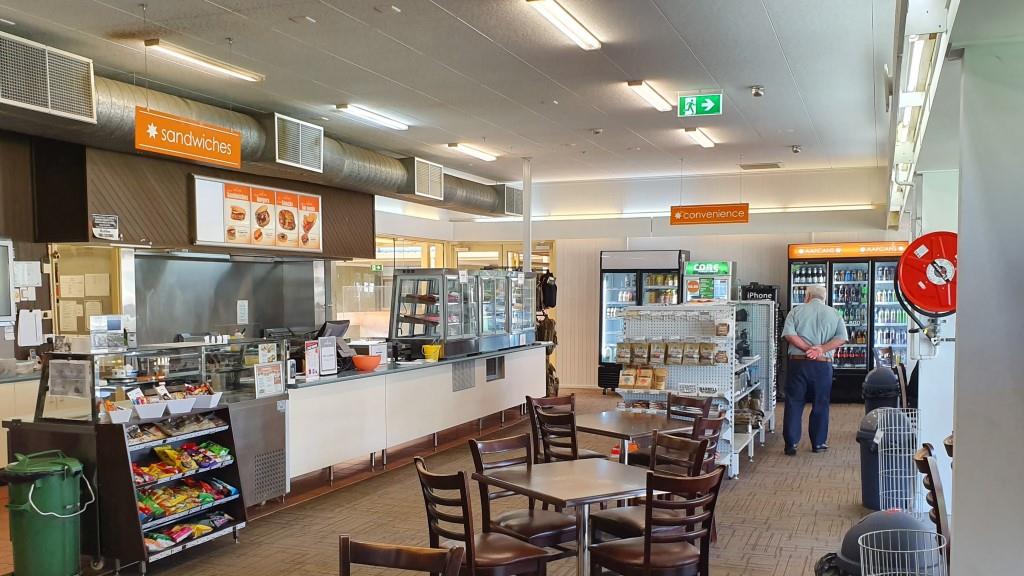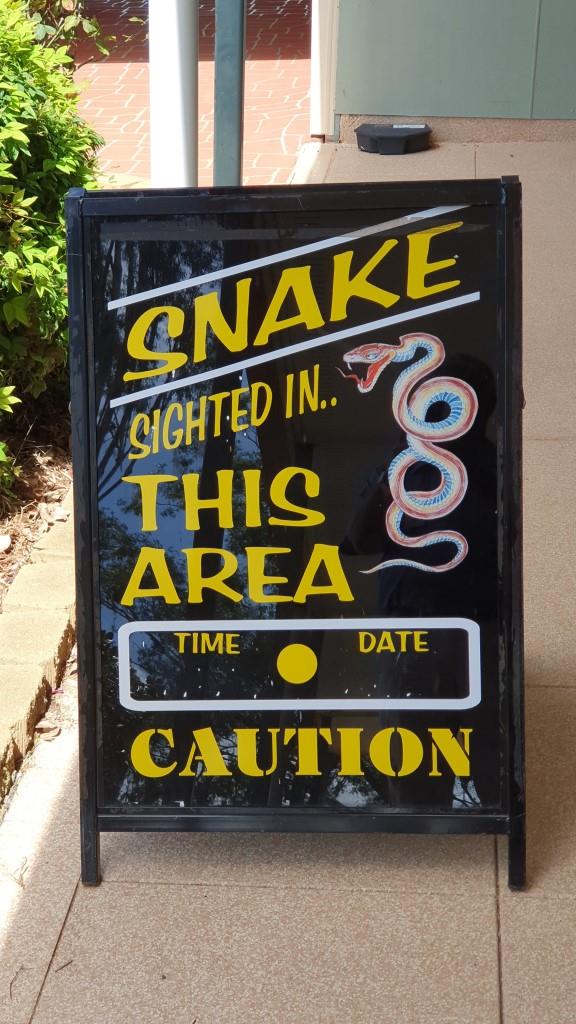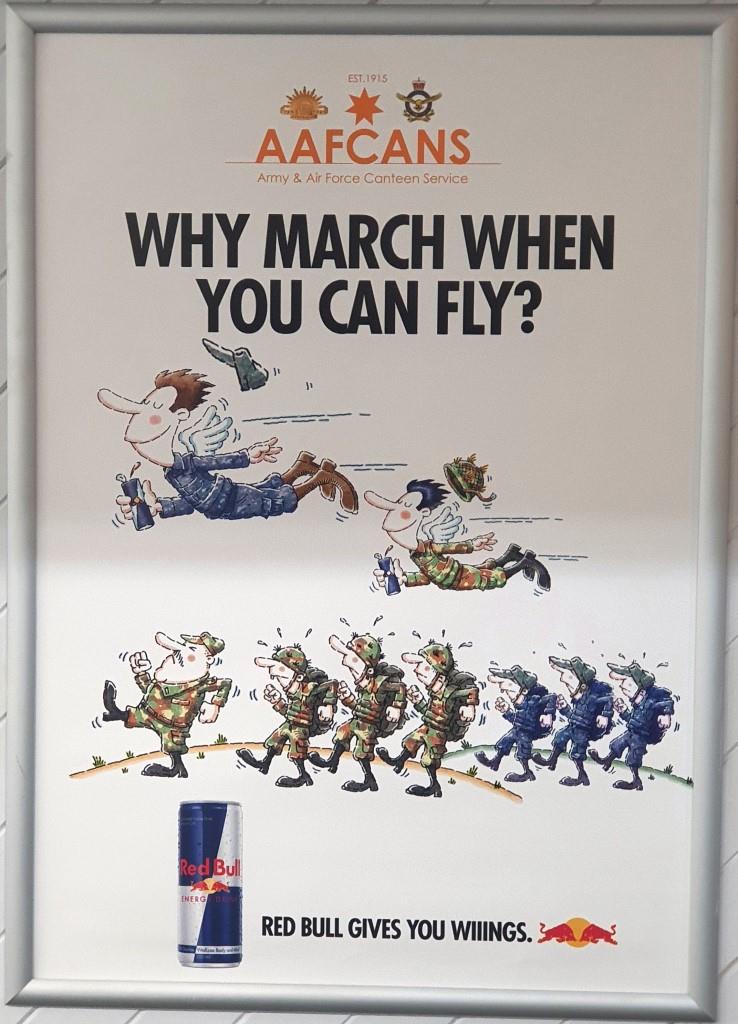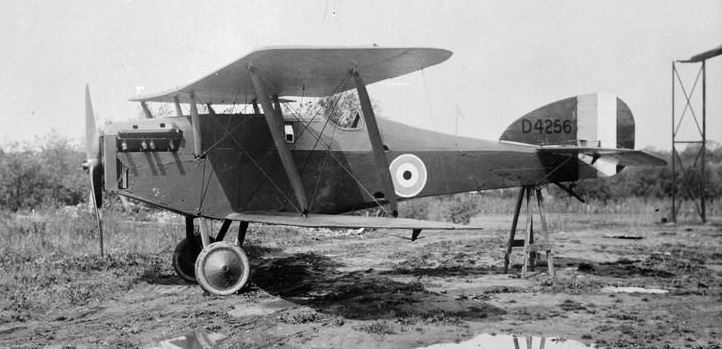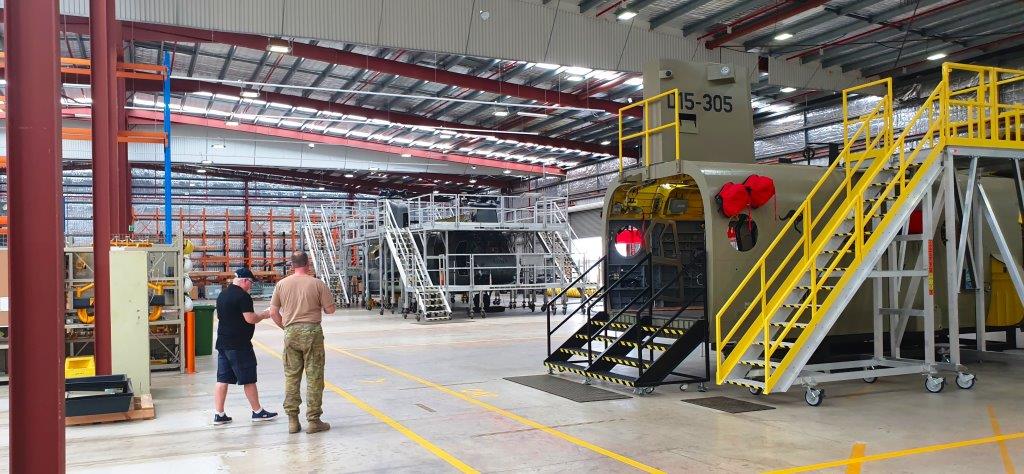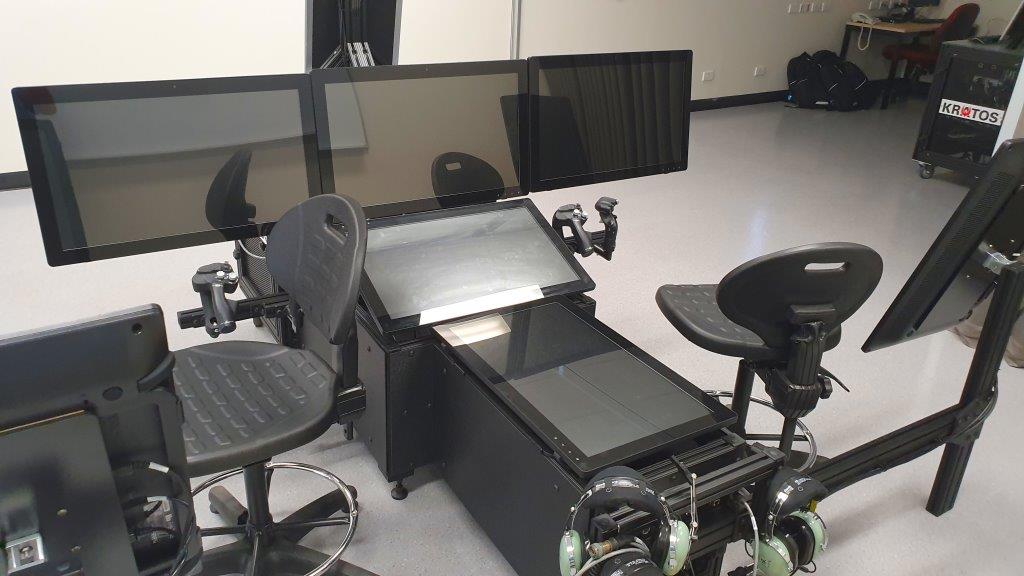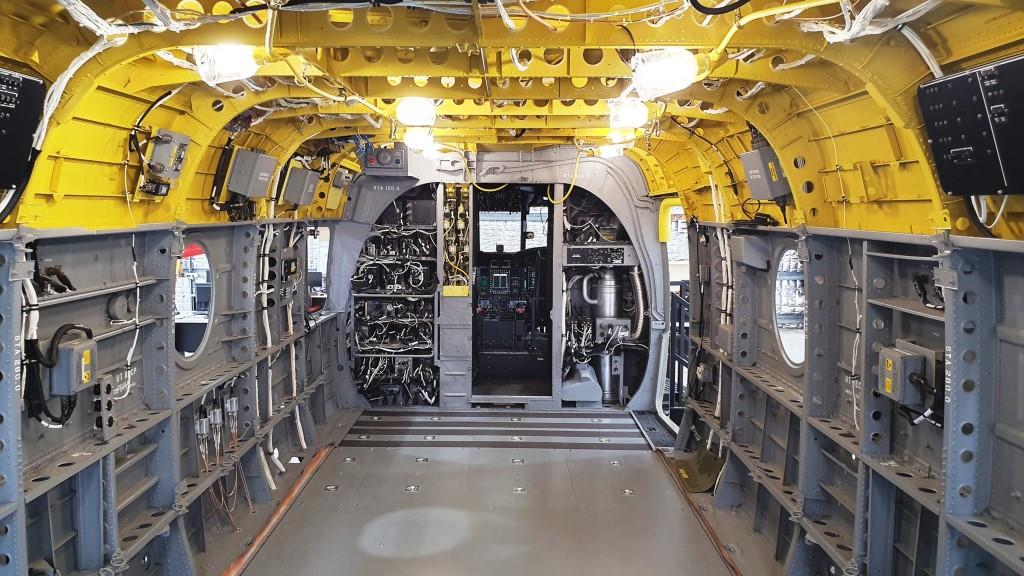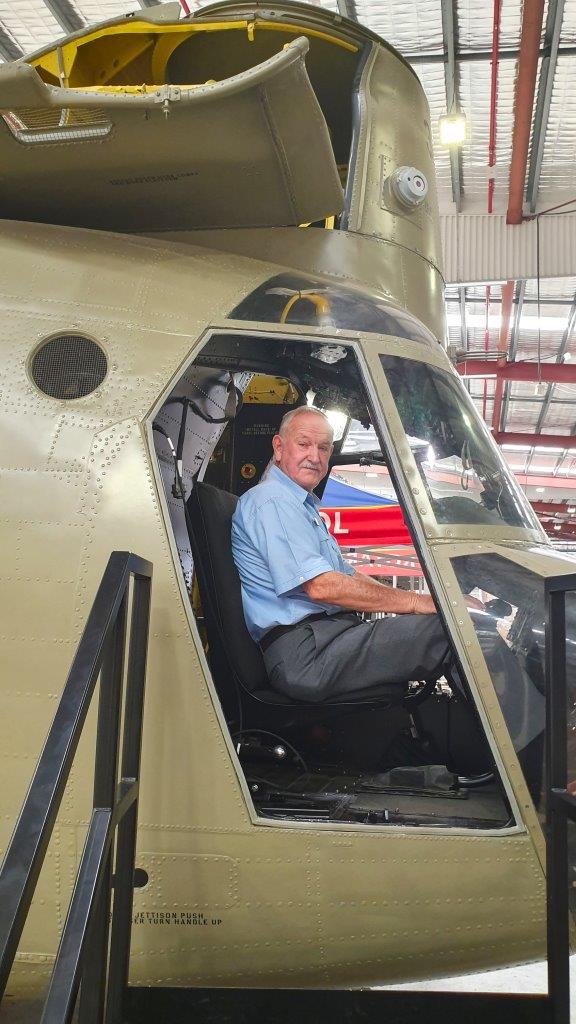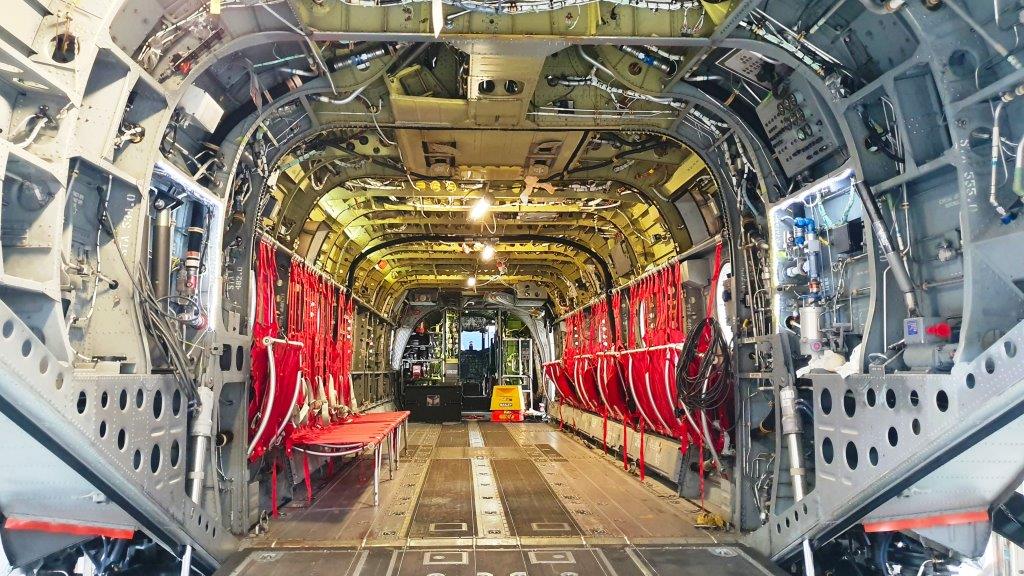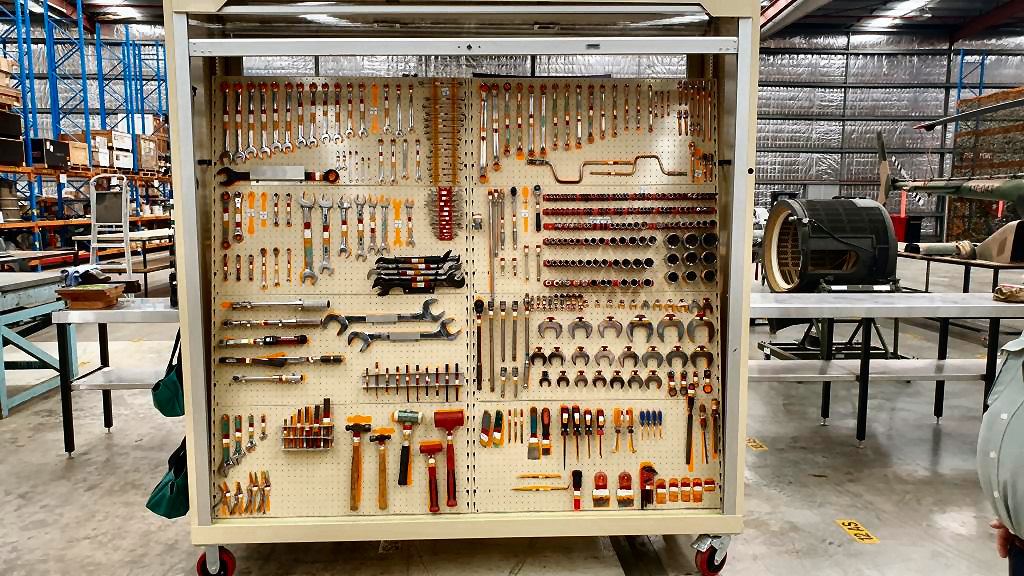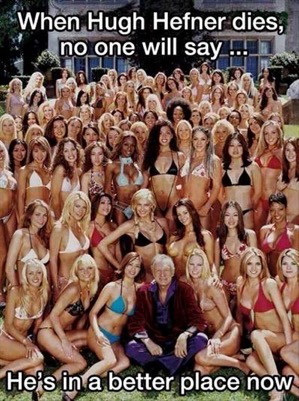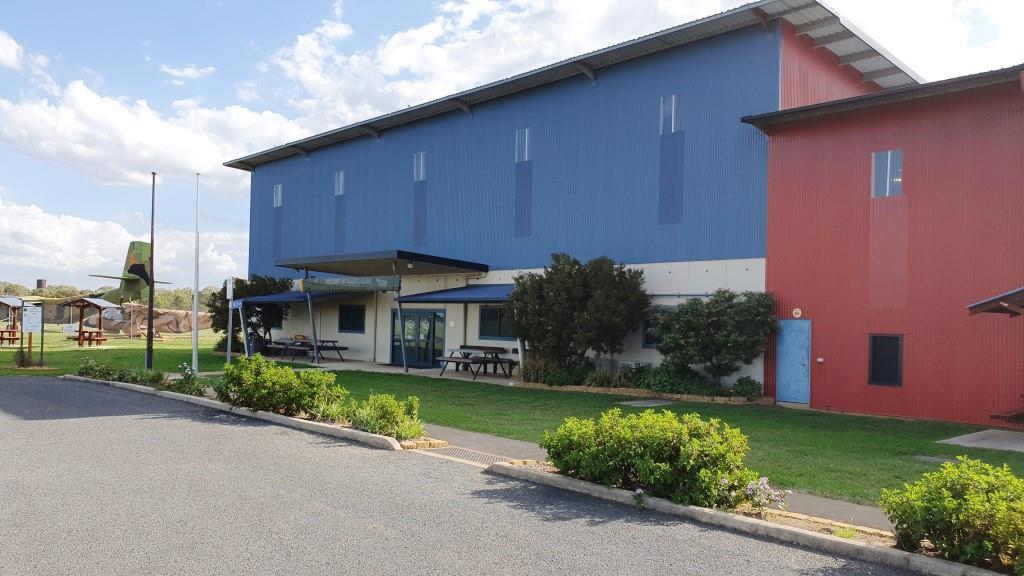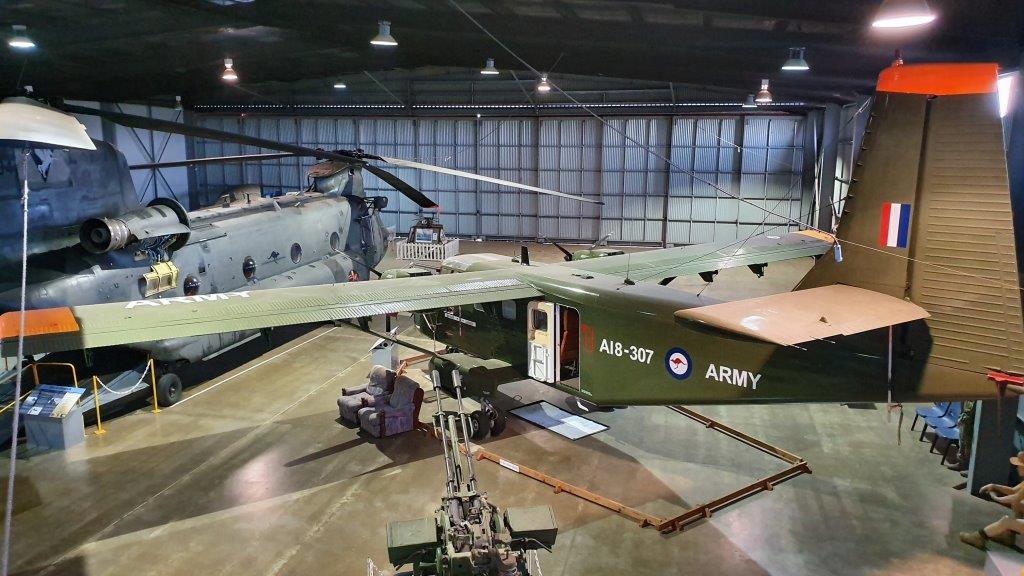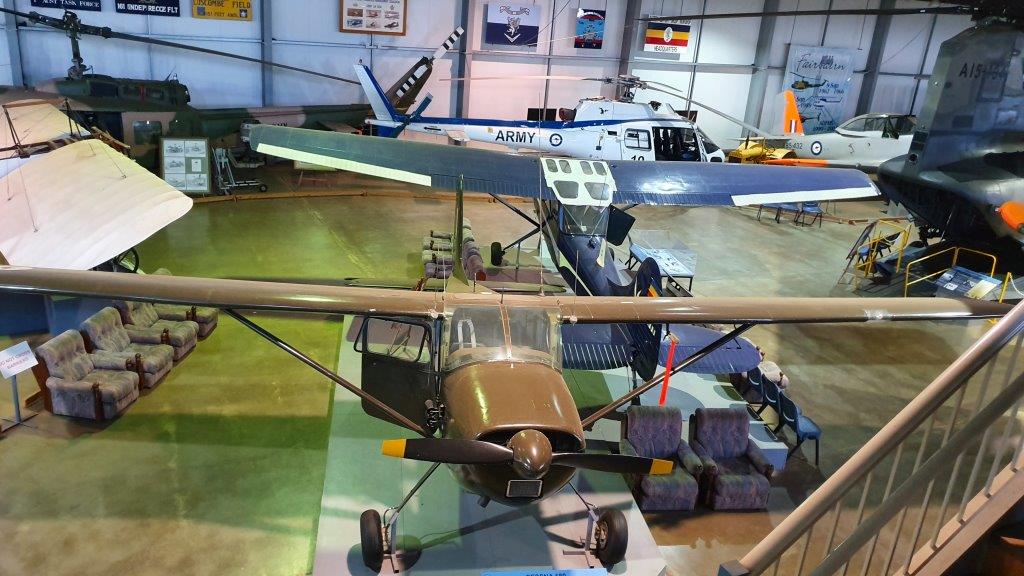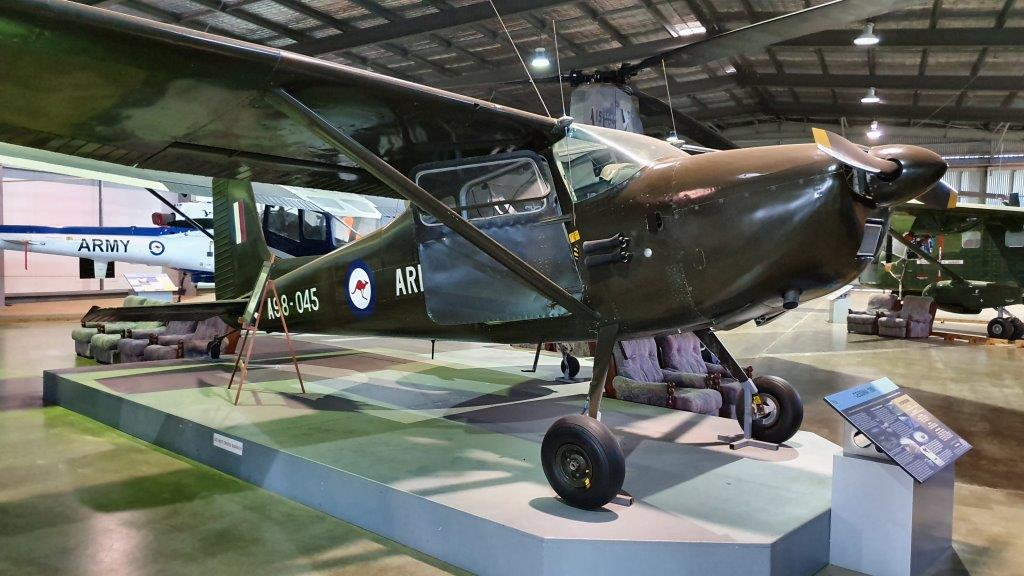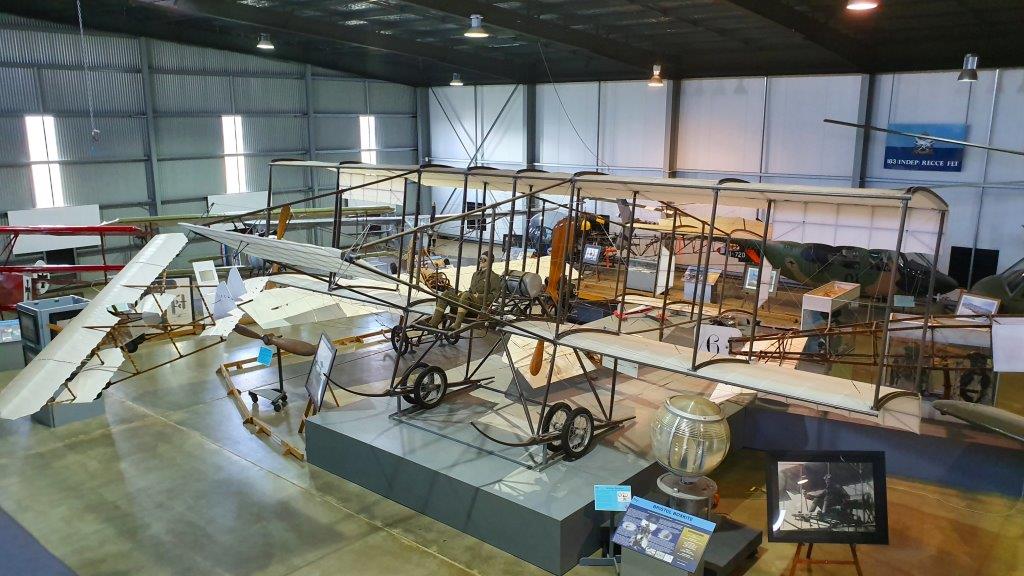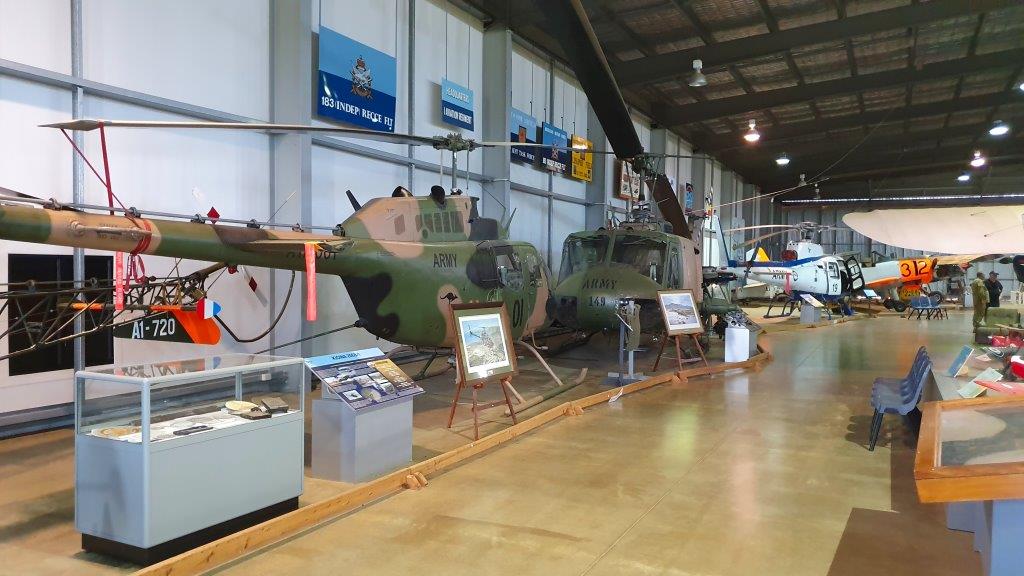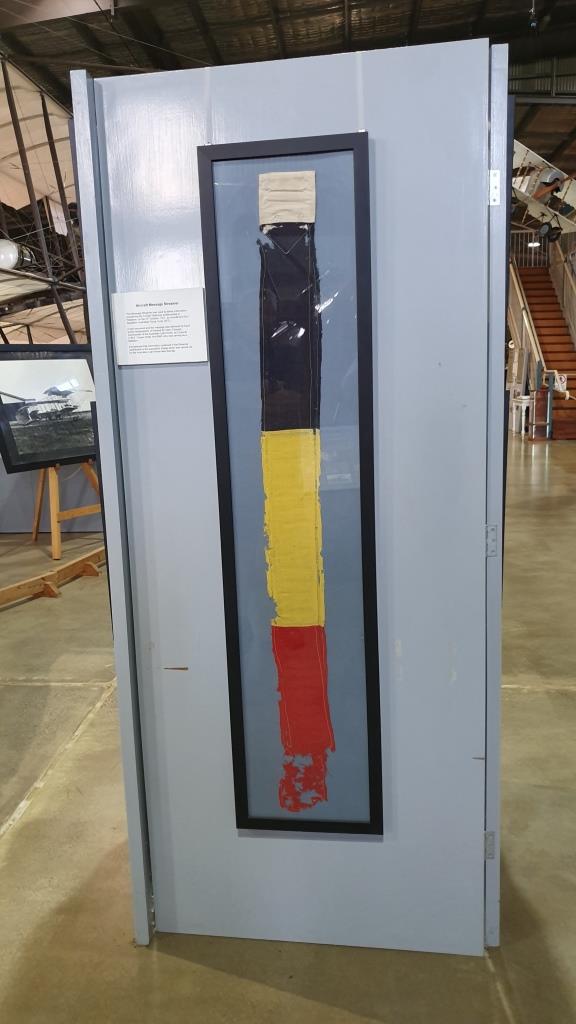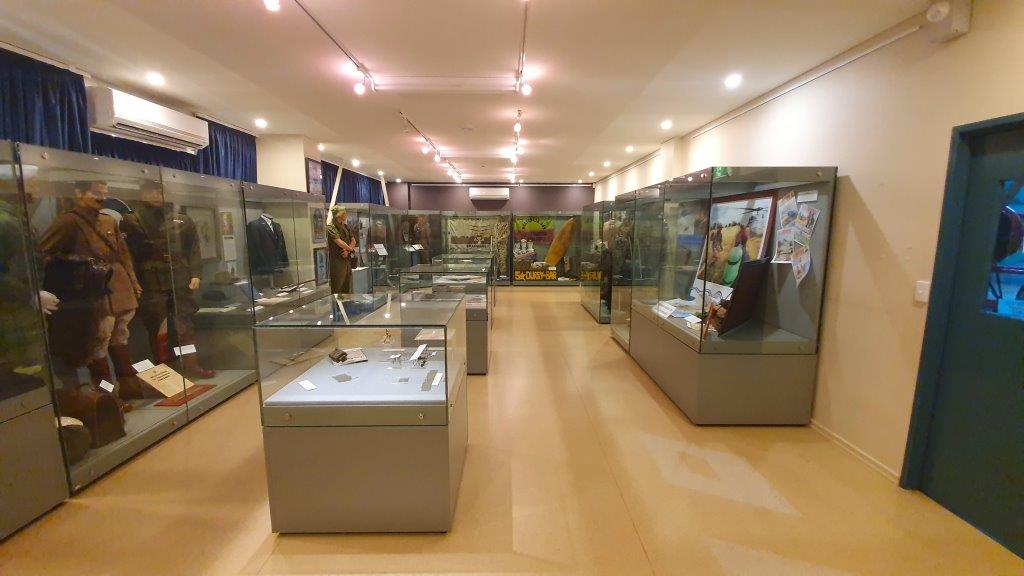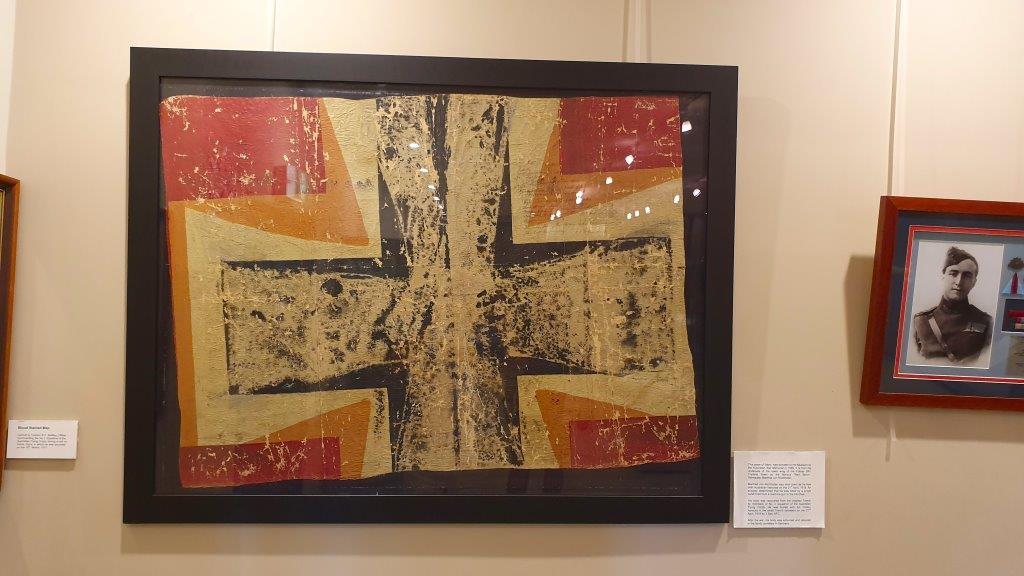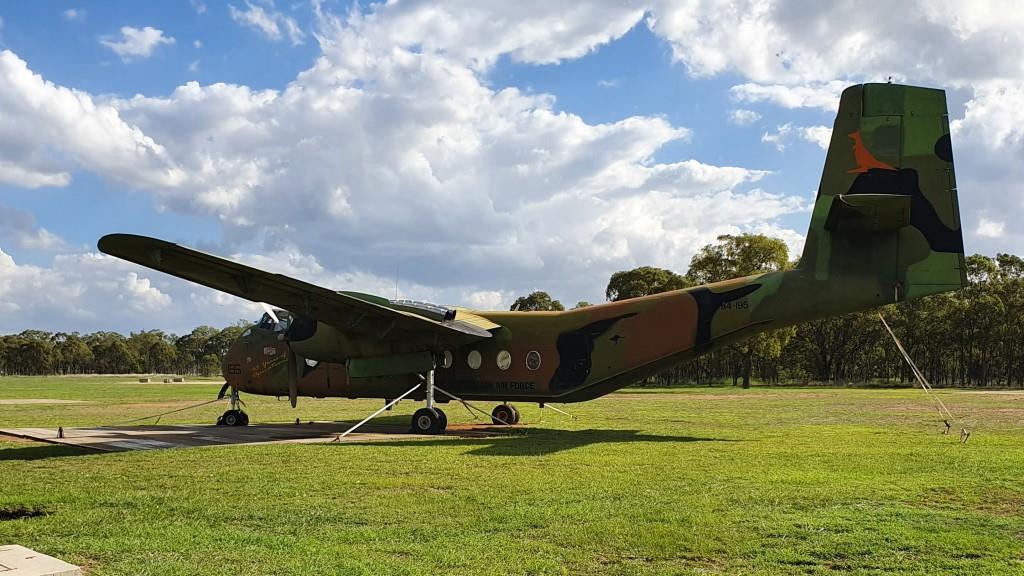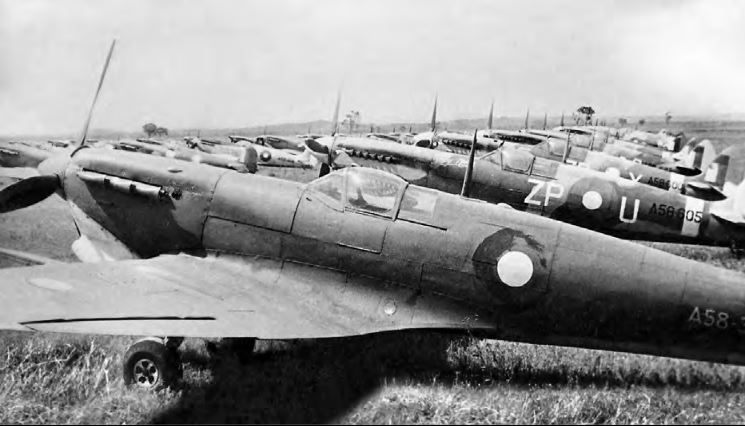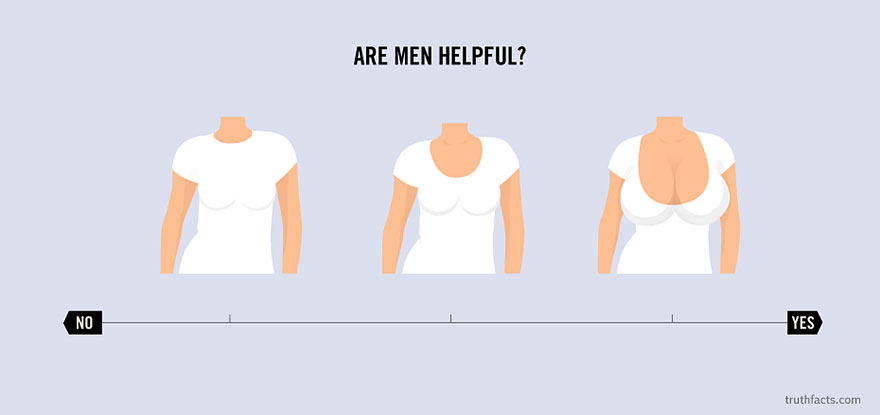|
|
||||||||||
|
||||||||||
|
Privacy Policy | Editorial Policy | Profit Policy | Join the Association | List of Members | Contact us | Index | Links |
||||||||||
|
Back Go to page: 1 2 3 4 5 6 7 8 9 10 11 12 13 14 15 16 17 18 19 20 Forward
|
||||||||||
|
|
||||||||||
|
Oakey Army Aviation Training Centre.
Back in early April, John Griffiths, John Sambrooks, John Lunn and I were fortunate enough to have a look over the Army’s Aviation Training Base at Oakey which is about 30 klms north west of Toowoomba, an easy 1¾ hour drive from Brisbane.
Major Matt Grant, who is currently a reservist, graciously gave up his day and drove out from Toowoomba to show us around. Matt, who is the PR man for the Army at Oakey, is a former television, print and radio journalist. He has served in the Regular Army as an officer with service in the Middle East and Asia Pacific regions where he was responsible for strategic communications. He is an accomplished corporate speaker, master of ceremonies and media trainer and is currently lecturing in Public Relations at the Toowoomba Campus of the University of Southern Queensland.
We met Matt at the gate at Oakey at 11.00am, were signed in, given passes and allowed onto the Base.
(These pics have been crunched to allow the page to open quicker. If you want a HD copy, please just ASK)
|
||||||||||
|
|
||||||||||
|
The Base at Oakey, which is 1350 feet AMSL, began life as a RAAF Base in October 1943, during WW2. Initially established as a home for 6AD, with a complement of 1751 men and 248 WAAFs, 6AD’s job was to assist 3AD at Amberley in the maintenance of Beaufort, Mustang, Norsemen, Wirraway and Spitfire aircraft and to act as a forward depot for aircraft operating from New Guinea and northern Australia. It also serviced large quantities of electronics equipment. The airfield covered 934 acres and nine American type workshop hangars, originally consigned to the Admiralty in Singapore, were diverted to Oakey for 6AD’s use.
After the war, Oakey was handed over to the Department of Civil Aviation and operated as a civvy airport until July 1968 when the Australian Army Aviation Corps was formed and control of the airport was handed over to the Army. 6 Aviation Squadron was then relocated from Amberley and additional Army Aviation units were raised including Headquarters Army Aviation Centre to control the airfield and the Army Aviation Centre Base Squadron.
The RAAF operates the Control Tower which looks after a small area of airspace, with a radius of 5nm from the centre of the airport, up to 8500 ft. What a job!!. Whilst the airfield is military controlled and regulated, a small civil terminal has been maintained on the airfield for many years. The current terminal structure was built at the same time as the new buildings for the Army Flying Museum refurbishment in 2005 and shares the access road to this facility. The airfield does not cater for Regular Public Transport (RPT) airline services, however it does provide an emergency alternative for the Toowoomba airport in the event of adverse weather.
In 2007, Boeing Australia was announced the successful tenderer for the Army Aviation Training and Training Support (AATTS) contract and commenced pilot, aircrew and technician training for the Kiowa and Black Hawks helicopters and also operational fleet maintenance. In 2010, a new expanded contract was awarded to include most facets of military rotary wing flying training for Kiowa, Black Hawk and Chinook helicopters.
Oakey airfield has since evolved as the primary Australian Army Aviation base and the Aviation Centre is responsible for all Army pilot, ground crewman, loadmaster and aircraft maintenance training. In addition, under a Defence Cooperation Agreement, it accommodates a helicopter training squadron of the Republic of Singapore Air Force. With the planned relocation of the Army component of the Australian Defence Force Helicopter School (ADF), and with the arrival of the new armed reconnaissance helicopters, it will become one of the busiest Defence airfields in Australia. The Oakey Base has a permanent population of approximately 1300 people, comprising 760 military members, 130 Commonwealth public servants, 300 contract staff and 110 Singaporean Armed Forces personnel.
The Base has modern living quarters for students attending courses and for single members working on the base.
|
||||||||||
|
|
||||||||||
|
Each “unit” in each housing complex contains a double bed, storage facilities, a small kitchenette including a sink, fridge and microwave oven. Each also contains its own ensuite bathroom/toilet. No more trudging down the balcony to the shower blocks.
|
||||||||||
|
|
||||||||||
|
Each occupant, who owns a car or bike, also has access to a covered car port.
Each living quarter “block” includes a laundry with modern washing machines and driers. Other facilities include tennis courts, squash courts, basketball and netball court, football ovals, heated 25m indoor swimming pool, well equipped gymnasium, defence banking and credit union branches as well as an AAFCANS kiosk (with ATM) which provides messing facilities for Soldiers, SNCOs, and Officers.
|
||||||||||
|
|
||||||||||
|
|
||||||||||
|
||||||||||
|
|
||||||||||
|
|
||||||||||
|
After our windscreen tour and as it was lunch time, we were dropped off at the Sergeant’s Mess where we met with the Base RSM, Paul Simpfendorfer.
|
||||||||||
|
|
||||||||||
|
|
||||||||||
|
|
||||||||||
|
John Sambrooks, John Griffiths, RSM Paul Simpfendorfer, John Lunn, Trev Benneworth
|
||||||||||
|
||||||||||
|
|
||||||||||
|
|
||||||||||
|
|
||||||||||
|
|
||||||||||
|
John Sambrooks, Trev Benneworth, John Griffiths, John Lunn
|
||||||||||
|
After lunch, it was back into the car and off to have a look at the AAFCANS – the new version of the old ASCO. AAFCANS is, of course, an ADF abbreviation for Army and Air Force Canteen Service. Navy do their own thing. Things have changed though, the canteen is only a Monday to Friday operation and opens from 7.00am to 2.00pm Monday to Thursday and from 7.00am to 1.00pm on Friday. It’s closed on the weekend.
They do provide a “hungry van", which tours the Base twice a day during week days, at morning and afternoon “smoko” times.
|
||||||||||
|
|
||||||||||
|
The AAFCANS Café at Oakey.
|
||||||||||
|
||||||||||
|
|
||||||||||
|
|
||||||||||
|
|
||||||||||
|
Soldiers, up to the rank of Corporal, have their own wet club at Oakey, as they do at most other ADF Bases. The Club at Oakey, which is open from 4.00pm to 7.00pm, is known as the Frank McNamara VC Club and is named after Francis Hubert McNamara who was the only Australian aviator to receive the Victoria Cross as a result of his actions in World War 1.
Frank McNamara was a member of 1 Sqn with the Australian Flying Corps and on the 20th March, 1917, rescued a fellow pilot, Douglas Rutherford, who had been forced down behind enemy lines. Although wounded in the leg himself, NcNamara landed his single seat Martinsyde on rough terrain near Rutherford in an attempt to rescue him but as there was no spare cockpit in the single-seat Martinsyde, Rutherford jumped onto McNamara's wing and held onto the struts. McNamara crashed while attempting to take off because of the effects of his leg wound and Rutherford's weight overbalancing the aircraft. The two men, who had escaped further injury in the accident, set fire to the Martinsyde and dashed back to Rutherford's B.E.2. Rutherford repaired the engine while McNamara used his revolver against attacking enemy cavalry, who had opened fire on them. Two other No. 1 Squadron pilots overhead, Lieutenant (later Air Marshal Sir) Roy "Peter" Drummond and Lieutenant Alfred Ellis, also began strafing the enemy troops. McNamara managed to start the B.E.2's engine and take off, with Rutherford in the observer's cockpit. In severe pain and close to blacking out from loss of blood, McNamara flew the damaged aircraft 70 miles (110 km) back to base at El Arish.
Having effected what was described in the Australian official history of the war as "a brilliant escape in the very nick of time and under hot fire", McNamara "could only emit exhausted expletives" before he lost consciousness shortly after landing. Evacuated to hospital, he almost died following an allergic reaction to a routine tetanus injection and had to be given artificial respiration and stimulants to keep him alive but he recovered quickly. On the 26th March, McNamara was recommended for the Victoria Cross by Brigadier General Geoffrey Salmond, General Officer Commanding Middle East Brigade, RFC.
In 1921, when the AFC became the Australian Air Force (it became the RAAF in August 1921) he joined as a Flying Officer and retired as an Air Vice Marshall in 1946. He died in 1961.
|
||||||||||
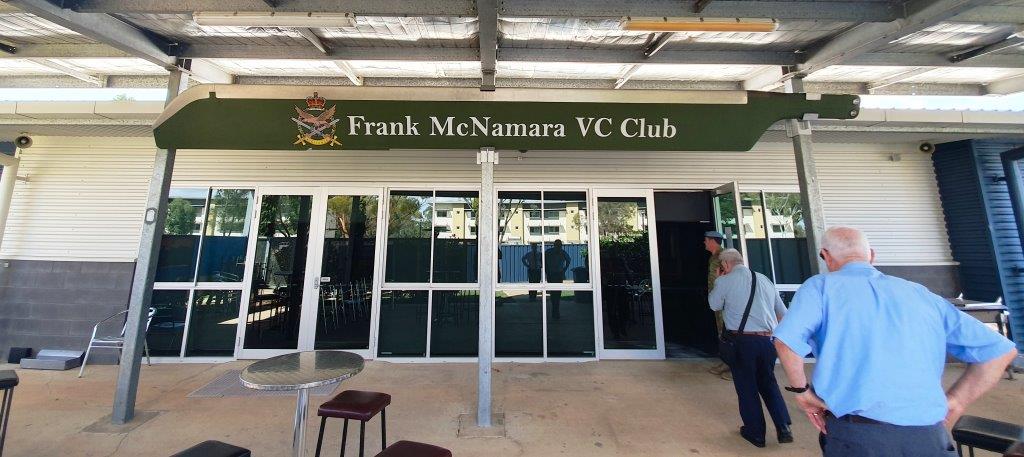 |
||||||||||
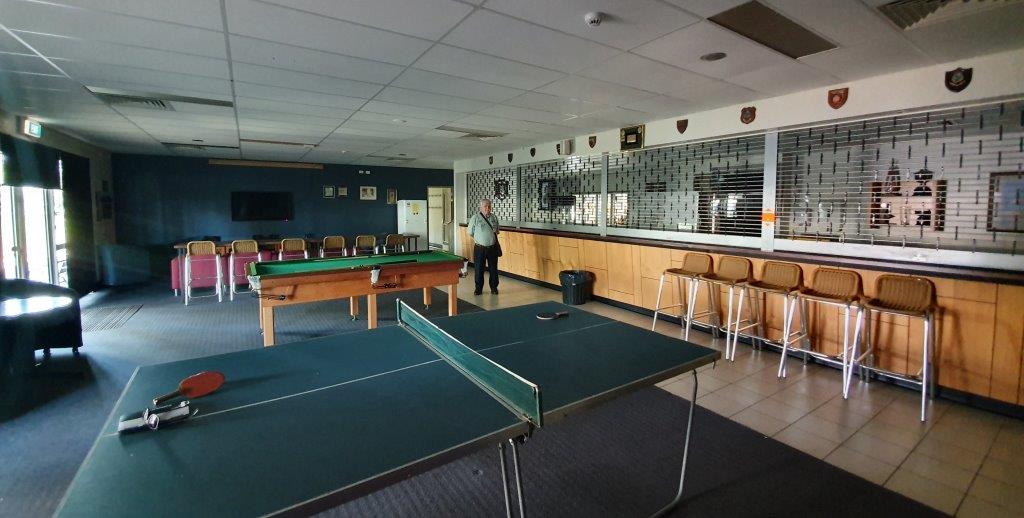 |
||||||||||
|
The interior of the McNamara Club - with Sambo longing for opening time.
|
||||||||||
|
Oakey is not an operational Base, there’s no big heavy green stuff, no rows of trucks, no tanks, not even any bull dozers all clean and parked in neat rows. Instead there is a bunch of people (you can’t call them boys and girls anymore) hard at it learning how to fly and how to fix all the Army’s various rotary wing aircraft.
The minimum sign-on period for trainee Aircraft Technicians is 6 years. Only Australian Citizens are eligible to join the Army and must be aged between 17 and 54 years, must has completed year 10 with passes in English, maths and science and must be medically and physically fit. Trainees initially complete a 50 week course at the RAAF Base at Wagga (see HERE), after which they are posted to a particular aircraft type training facility at Oakey to undergo 6 months of on-the-job training during which period they will also attend courses and instruction at the RAEME hangar.
In October 2018, Boeing teamed up with subcontractor Kratos Defence and Security Solutions and the Capability, Acquisition and Sustainment Group to equip the Army at Oakey with the most sophisticated Chinook maintenance training system outside of the United States. Australia’s future Army Chinook maintenance technicians now learn their trade using a suite of cutting-edge training devices that combine the Chinook airframe with simulated avionics systems for a virtually immersive training experience.
|
||||||||||
|
|
||||||||||
|
The new facility includes a Chinook Avionics Trainer (CAT), two Maintenance Blended Reconfigurable Avionics Trainers (MBRAT) and a Chinook Mechanical Training Aid. The systems will provide Army air maintenance personnel with a virtually immersive, full-task training experience that combines computer-based learning with replicated physical controls.
The CH-47F Chinook is the largest helicopter in the Army with 10 aircraft currently in service. Initially, an order of eight Chinooks was placed in 1962, these aircraft were to be operated by the RAAF but the order was soon cancelled in favour of more urgent priorities. The Australian military still required helicopters of this type and twelve CH-47C Chinooks were ordered in 1970 and operated by 12 Sqn RAAF. This order was the first export order for the aircraft and they entered service in December 1974. In 1989 they were retired as a cost-saving measure, but it was found that the ADF’s other helicopters could not replace their capabilities and as a result, four of the CH-47Cs were upgraded to CH-47D standard and returned to service in 1995 with the Army. The Army acquired two more CH-47Ds in 2000 and another pair in 2012. The CH-47Ds were replaced with seven new CH-47F aircraft during 2015, and another three were delivered in 2016.
As the training centre at Oakey is the only training facility of its kind in the region, it offers a huge opportunity to provide training support to coalition Chinook operators. Australia is positioned to become an international centre of Chinook expertise with Boeing providing support services from the Chinook operating base in Townsville as well as the maintenance training centre in Oakey.
We were lucky enough to be given a guided tour of the facility and what an amazing place it is.
|
||||||||||
|
|
||||||||||
|
Inside the training facility hangar.
|
||||||||||
|
|
||||||||||
|
One of the MBRAT training systems. (Run your mouse over the pic to see what it looks like when being used.)
|
||||||||||
|
As part of the training aid suite, the MBRAT facility provides fault replication and therefore diagnosis, enabling the Rotary Wing Aircraft Maintenance School to train its Aircraft and Avionics Technicians.
The MBRATs systems can be configured to suit the ADF helicopter fleet, whether that be Chinook or a future platform, ensuring longevity and adaptability of the aids. They form part of a larger Boeing Defence Australia training support program to further strengthen BDA’s training capability while ensuring the Australian Army maintains a qualified crew of technicians to support domestic and international operations.
|
||||||||||
|
|
||||||||||
|
The modified airframe (above) is the CAT and is linked to the MBRAT system. It is used by the Avionics trainees for fault finding and rectification.
|
||||||||||
|
||||||||||
|
|
||||||||||
|
|
||||||||||
|
The airframe above is an engines/airframe training aid.
|
||||||||||
|
||||||||||
|
|
||||||||||
|
|
||||||||||
|
|
||||||||||
|
It was then time to head for home. Thanks heaps to Major Matt Grant for organising everything and for making us feel most welcome. Thanks also to WO1 Paul Simpfendorfer who stuck with us for the rest of the day and showed us things we probably wouldn’t have normally seen.
And, as we were “out this way”, we thought it a good idea if we had a look over the Australian Army Flying Museum, which is just off Base.
|
||||||||||
|
|
||||||||||
|
|
||||||||||
|
The Army can trace its involvement in aviation all the way back to WWI, the RAAF didn’t even exist when Army started flying. Way back, a few soldiers, including some members of the Light Horse, joined the newly formed Australian Flying Corps which eventually morphed into the RAAF in 1921. There was then a break from flying until 1968 when the Australian Army Aviation Corps was formally established at Oakey. The early fleet comprised fixed-wing light aircraft (Cessna 180s) and the iconic Bell 47. While the technology has certainly changed since then, the work the Army does hasn't.
The museum had its humble beginning in a single room on Base back in the mid 1980’s. It didn’t have any aircraft however, there were a number of aircraft at Oakey ‘strategically located’ that were a valuable part of the Army Aviation Corps history and these aircraft formed the foundation for what is now the museum. Those early aircraft included a Cessna 180, three Bell 47s, and an O1-G Bird Dog. The museum eventually obtained a hangar to store the aircraft and on 01 July 1989, the museum was officially opened. During the following years, the museum expanded to include four hangars and a memorabilia room.
In August 2005, the museum moved into a new purpose-built facility on the airfield at Oakey and opened for business on the 02 September 2005. The move was enabled following a grant from the Fed Government. Distinguished guests at the opening of the new facilities included national and local dignitaries, including well known aviation identity Dick Smith. From its humble beginning the museum has continued to grow and now houses 22 aircraft on display within the museum, all in a spotless condition and a number of aircraft undergoing restoration and in storage, with more to come.
It also includes a memorabilia room displaying objects and relics of significance from WW1 through to current conflicts in Afghanistan. The Australian Army Flying Museum is a sub-unit of the Army History Unit, a direct command unit of the Australian Army Headquarters.
|
||||||||||
|
|
||||||||||
|
|
||||||||||
|
|
||||||||||
|
|
||||||||||
|
|
||||||||||
|
The Army acquired the little Cessna 180s in the late 1950s to replace the obsolete Auster Mark 3. Along with the Bell 47 helicopter, the Cessna became the first Army owned and Army operated aircraft since the formation of the RAAF in 1921. Although it was primarily a civilian aircraft adapted for military use, it proved to be a valuable and versatile asset, operating throughout Australia, Papua New Guinea and South Vietnam.
19 Cessna 180s were purchased and delivered to the Army between 1959 and 1962.
They flew a total of 16,146 hours in South Vietnam and were used for many different roles, including target marking, leaflet dropping, top-cover convoy cover and the postal service.
On the 31st October, 1966, this particular aircraft had the honour of being the first fixed wing aircraft to land on Luscombe Airfield, Nui Dat. The Base at Nui Dat was constructed in 1966 and as the airfield was nearing completion, everyone wanted to be the first to land and the closer it came to being finished, more aircraft appeared. The OC, Major Laurie Doyle, was advised by the engineer in charge that if he wanted to be the first to land, he had "better get there fast".
Captain John Wright picked up the OC in the 180 and together they flew to Nui Dat to find the airstrip obstructed with various pieces of large engineering equipment to stop anyone else landing. When he radioed the engineers they quickly removed the equipment from the runway in time for Major Doyle to take the honour of the being the first to land on the new strip.
The little Cessna was also the last 180 to be withdrawn from service in South Vietnam.
This aircraft joined the Army on the 12th October 1961 and was discharged on the 26th March 1973. It flew a total of 6354.3 hours in khaki.
|
||||||||||
|
|
||||||||||
|
|
||||||||||
|
|
||||||||||
|
|
||||||||||
|
||||||||||
|
|
||||||||||
|
|
||||||||||
|
The memorabilia room.
|
||||||||||
|
The following item takes pride of place in the Memorabilia room.
|
||||||||||
|
|
||||||||||
|
This piece of fabric was donated in 1989 to the Museum by the Australian War Memorial, it is from the underside of the lower wing of the Fokker DR1 triplane flown by the famous “Red Barron”, Rittmeister Manfred von Richthofen.
Von Richthofen was shot down as he flew over Australian trenches on the 21st April, 1918. An autopsy determined that he was killed by a single (lucky) bullet fired from a machine gun in the trenches.
His body was recovered from the crashed Fokker by members of 3 Sqn of the Australian Flying Corps and he was buried with full military honours in the small French cemetery on the 22nd April 1918 by 3 Sqn personnel.
After the war, his body was exhumed and reburied in the family cemetery in Germany.
|
||||||||||
|
|
||||||||||
|
Only one Caribou (proper aeroplane) is left at Oakey, A4-195, and sadly she is suffering the aftermath of a severe hail storm. She badly needs bogging up and a repaint.
Admission costs to the museum are:
It is open from 10.00am to 3.00pm Wednesday to Saturday and is definitely worth a visit.
The thing that usually comes to mind about Oakey post WWII is that it was the place where about 350 Spitfires were destroyed (by the scrap man). Other aircraft types were also scrapped at Oakey. Amongst them was CAC Boomerangs. The airframes of Boomerangs were constructed of steel tubing and thus of little value so many found their way to local farms where they were a source of nuts and bolts. The Boomerang wings and centre sections were metal and were melted down.
There is an old rumour that, after the war, hundreds of Spitfires were carefully wrapped and stored in the area and are just waiting for someone to discover them. We looked, couldn’t find any!
|
||||||||||
|
|
||||||||||
|
|
||||||||||
|
Army has released some video on its aircraft, you can see them below.
|
||||||||||
|
The Blackhawk. |
||||||||||
|
|
||||||||||
|
The Tiger. |
||||||||||
|
|
||||||||||
|
|
||||||||||
|
|
||||||||||
|
|
||||||||||
|
|
||||||||||
|
|
||||||||||
|
|
||||||||||
|
|

